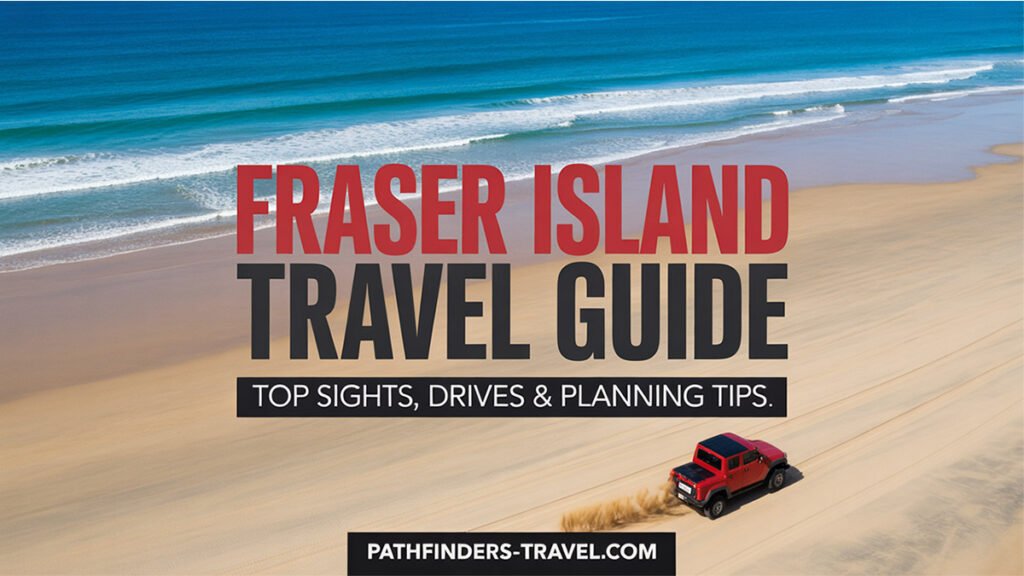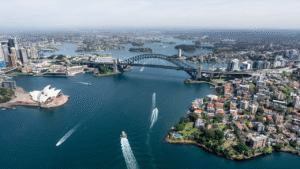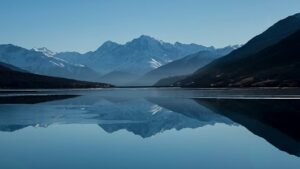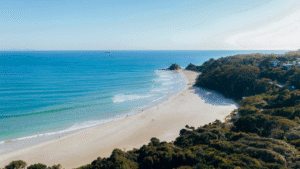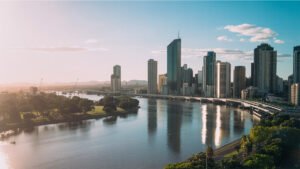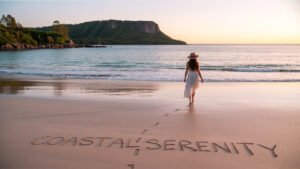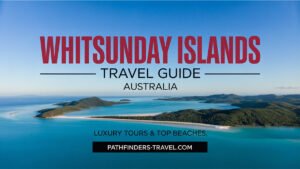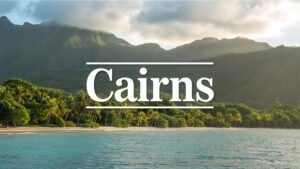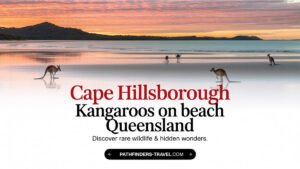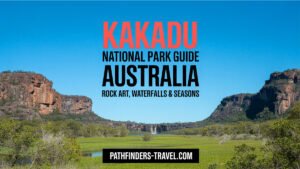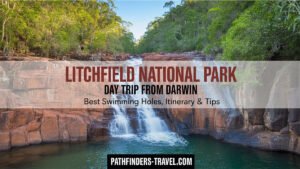Estimated reading time: 20 minutes
Key Takeaways
- K’Gari (Fraser Island) is the world’s largest sand island and a UNESCO World Heritage site with unique ecosystems growing entirely on sand.
- Lake McKenzie features crystal-clear freshwater and pure white silica sand, making it one of the island’s most iconic attractions.
- 75 Mile Beach serves as both a scenic attraction and a functioning sand highway, requiring 4WD vehicles for access.
- The Maheno Shipwreck and Pinnacles Coloured Sands offer fascinating historical and geological experiences on the eastern beach.
- Visitors need vehicle permits and should consider guided tours if inexperienced with off-road driving on sand.
Table of Contents
- Introduction
- Why Visit Fraser Island?
- Visiting Lake McKenzie (Fraser Island)
- 75 Mile Beach Drive Experience
- Maheno Shipwreck Fraser Island | History & Travel Guide
- Discovering The Pinnacles Coloured Sands (K’Gari)
- Practical Travel Planning Tips
- Frequently Asked Questions about Fraser Island
Introduction of Fraser Island
Welcome to the definitive fraser island travel guide, your passport to experiencing one of Australia’s most remarkable natural wonders. K’Gari, as it’s known to the Butchulla people (meaning “paradise”), has captivated travelers for generations with its perfect blend of adventure and relaxation opportunities. This incredible island off Queensland’s coast stands as a testament to nature’s ability to create extraordinary landscapes entirely from sand.
From the crystal-clear waters of Lake McKenzie to the thrilling drive along 75 Mile Beach, from the haunting ruins of the Maheno Shipwreck to the vibrant hues of The Pinnacles Coloured Sands, K’Gari offers unforgettable experiences at every turn. This guide combines practical information with insider tips to help you navigate this unique destination and create memories that will last a lifetime.
Want to see this for yourself? Click here to jump to the video in UHD 4K Resolution.
Why Visit Fraser Island?
Natural Beauty & Unique Status
K’Gari holds the distinction of being the world’s largest sand island, stretching over 120 kilometers along Queensland’s coast [SOURCE]. What makes this place truly remarkable is how this massive accumulation of sand supports such diverse and thriving ecosystems. The island isn’t just sand dunes; it’s home to ancient rainforests, crystal-clear freshwater lakes, and complex dune systems that have developed over hundreds of thousands of years.
This extraordinary natural phenomenon has earned K’Gari its well-deserved UNESCO World Heritage status, recognizing it as a place of outstanding universal value [SOURCE]. The island stands as an exceptional example of ongoing biological and ecological processes, particularly how plant succession has occurred on a sand substrate. Before visiting Brisbane, many travelers make Fraser Island a must-see destination on their Queensland itinerary.
History & Appeal
The island’s vibrant ecosystems include lush rainforests that bizarrely grow directly from sand, hosting some of the tallest trees found on sand anywhere in the world [SOURCE]. Over 40 freshwater lakes dot the landscape, providing habitats for unique aquatic life and creating breathtaking natural swimming pools.
K’Gari holds profound historical significance to the Butchulla people, who have inhabited the island for thousands of years. Their rich cultural heritage is woven into the landscape through stories, sacred sites, and traditional ecological knowledge [SOURCE]. European history on the island began with Captain Cook’s observations in 1770, followed by Matthew Flinders’ landing in 1802, and later the controversial naming after Eliza Fraser, who was shipwrecked there in 1836.
Adventure & Relaxation
The island offers a perfect balance of adventure activities and opportunities for peaceful relaxation. Off-road enthusiasts revel in the challenging terrain of inland tracks and the unique experience of driving on 75 Mile Beach, which functions as both a beach and a highway [SOURCE].
For those seeking tranquility, the island’s freshwater lakes provide idyllic swimming spots far from the crowds of coastal beaches. As night falls, the lack of light pollution creates perfect conditions for stargazing, with the Milky Way stretching across the sky in breathtaking clarity. Whether you’re hiking through ancient rainforests or simply relaxing on pristine beaches, K’Gari caters to all types of travelers.
Visiting Lake McKenzie Fraser Island | Boorangoora Travel Guide

Lake Description
Lake McKenzie, known to the Butchulla people as Boorangoora, stands as the crown jewel among Fraser Island’s many natural attractions. This perched lake sits 100 meters above sea level in a depression formed by sand blown into a watertight shape [SOURCE].
What makes Lake McKenzie truly special is its extraordinary water clarity and the pure white silica sand that surrounds it. The sand acts as a natural filter, keeping the freshwater remarkably pure and giving it that striking blue color that shifts from turquoise in the shallows to deeper blues further out. Unlike coastal beaches, there’s no salt, no seaweed, and no stinging creatures—just pristine water perfect for swimming.
The fine, powdery sand isn’t just beautiful to look at—it’s also excellent for naturally exfoliating skin and even cleaning jewelry. Many visitors from the Sunshine Coast make the journey specifically to experience this unique natural feature.
Practical Tips
For the best experience at Lake McKenzie, timing is everything. Early mornings (before 10 AM) or late afternoons (after 3 PM) typically offer the most serene experience with fewer crowds [SOURCE]. If possible, plan your visit on weekdays rather than weekends, and avoid Australian school holidays when the lake can become quite busy.
The lake is accessible via sealed roads, making it relatively easy to reach compared to some of Fraser Island’s other attractions. Basic facilities are available near the lake, including toilets, changing areas, and picnic spots with tables and shelters [SOURCE]. However, there are no food vendors, so it’s advisable to bring your own refreshments and snacks.
Swimming conditions are generally excellent year-round, though the water can be cooler during winter months (June-August). The lake has a gradual slope in most areas, making it suitable for swimmers of various abilities, though as always, children should be supervised.
Safety & Environment
Preserving Lake McKenzie’s pristine condition requires collective effort from all visitors. The lake’s delicate ecosystem can be easily disrupted, so it’s crucial to follow some important guidelines [SOURCE]:
- Use only biodegradable sunscreen or, better yet, cover up with clothing instead of using sunscreen when possible
- Never use soaps, shampoos, or detergents in or near the lake
- Avoid wearing insect repellent when swimming
- Take all trash with you when leaving
- Stay on designated paths to prevent erosion
- Don’t feed the wildlife, including birds that may approach picnic areas
Following these guidelines ensures that future generations can enjoy the same unspoiled beauty that makes Lake McKenzie such a special place. The lake’s ecosystem is particularly vulnerable because it contains only rainwater, with no streams flowing in or out, meaning any contaminants that enter the lake remain there.
75 Mile Beach Drive Experience | K’gari East Coast Route in Fraser Island
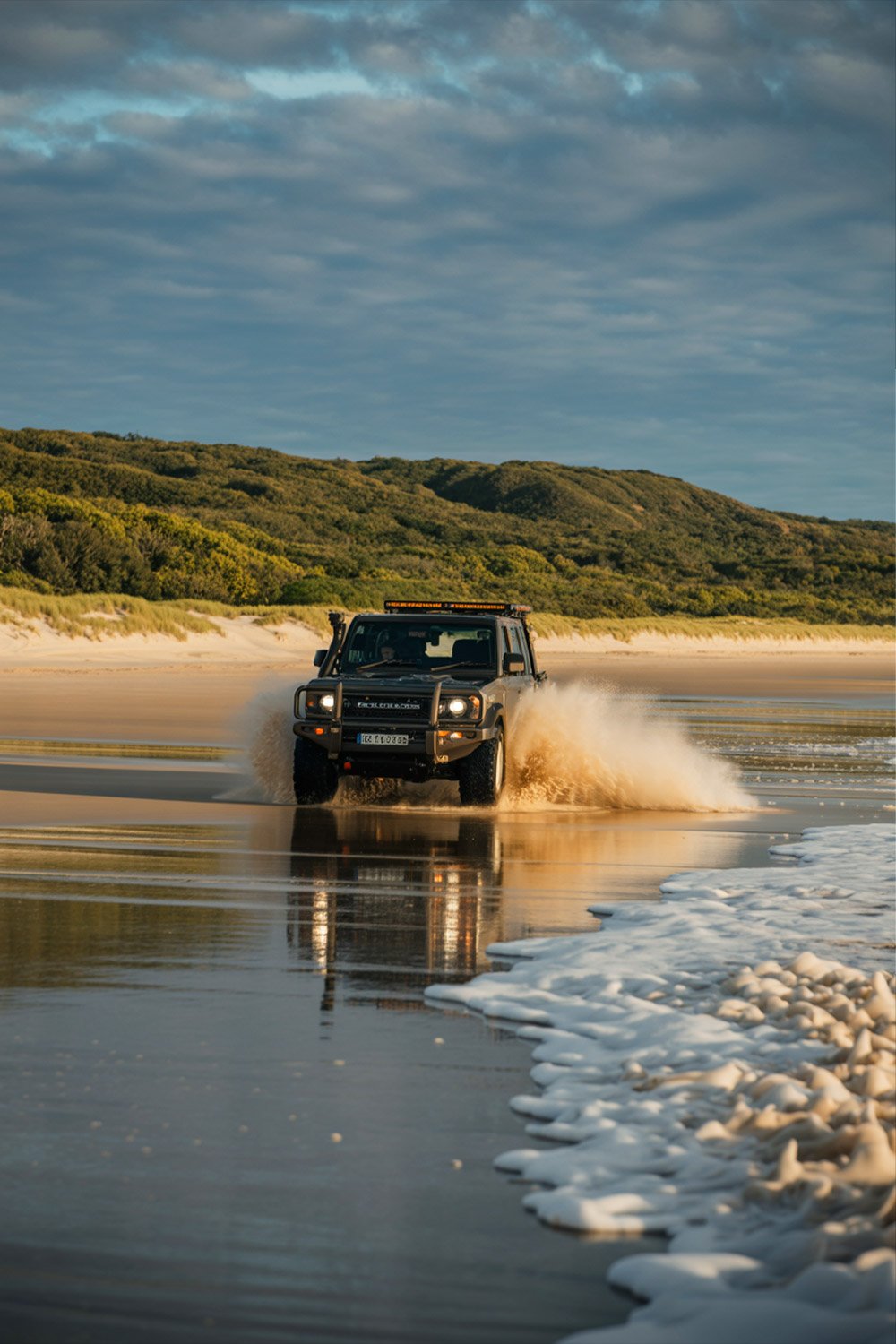
Unique Experience
Driving along 75 Mile Beach offers one of Australia’s most distinctive road trip experiences. This vast stretch of coastline serves a dual purpose as both a stunning beach and a gazetted highway, complete with speed limits and road rules [SOURCE].
The sensation of navigating a 4WD vehicle along the firm, wet sand as waves crash nearby creates an exhilarating adventure unlike conventional driving. The beach stretches nearly the entire eastern coast of Fraser Island (though it’s actually closer to 120 kilometers than 75 miles), providing breathtaking views of the Pacific Ocean on one side and towering sand dunes on the other.
Wildlife sightings add to the experience, with dingoes occasionally spotted along the beach, sea eagles soaring overhead, and the possibility of seeing dolphins or even whales from shore during migration season (August to November). This natural highway serves as the main arterial route connecting many of the island’s major attractions.
Details
Driving on 75 Mile Beach requires preparation and the right equipment. Only high-clearance 4WD vehicles with low-range capability are permitted on the island [SOURCE]. Standard cars, 2WD vehicles, and even all-wheel-drive SUVs without true 4WD capability are not suitable for the challenging sand driving conditions.
The beach presents various driving challenges that even experienced drivers need to respect:
- Soft sand patches that can cause vehicles to bog down
- Washouts and erosion after high tides or storms
- Streams and creeks crossing the beach
- Hidden obstacles like partially buried logs or rocks
- Other vehicles and pedestrians sharing the beach
Along the route, several must-visit landmarks enhance the journey [SOURCE]:
- Eli Creek – A crystal-clear freshwater stream where you can float downstream
- Maheno Shipwreck – The rusted remains of a luxury liner beached in 1935
- The Pinnacles Coloured Sands – Striking multi-colored sand formations
- Champagne Pools – Natural rock pools where ocean waves create bubbly water
- Indian Head – A rocky outcrop offering panoramic views and wildlife spotting
Tips
Successful navigation of 75 Mile Beach hinges on understanding and respecting the tides. Driving is safest and easiest during low tide, when the sand is most firmly packed and the beach is at its widest [SOURCE]. Always check tide charts before planning your day’s activities, as high tide can completely submerge parts of the beach, making travel impossible.
Safety considerations include:
- Observe the speed limit of 80 km/h on open beaches and 30 km/h in designated zones
- Give way to pedestrians and wildlife
- Watch for aircraft that use sections of the beach as a landing strip
- Carry recovery equipment including traction mats, a shovel, and tow rope
- Travel with at least one other vehicle when possible
The beach can get busy during peak season, particularly around popular attractions. Starting early in the morning not only helps avoid crowds but also provides optimal lighting for photography and increases chances of wildlife sightings.
Top Picked Activities in Fraser Island
Maheno Shipwreck Fraser Island | History and Visitor Guide
Historical Significance
The Maheno Shipwreck stands as one of Fraser Island’s most photographed and historically fascinating attractions. Built in Scotland in 1905, the SS Maheno initially served as a luxury ocean liner on the trans-Tasman route between Australia and New Zealand [SOURCE]. During World War I, it was converted into a hospital ship that served at Gallipoli and in the English Channel.
The vessel’s final journey began in 1935 when it was sold for scrap to a Japanese company. While being towed to Japan, a cyclone severed the towline, and the ship drifted helplessly until washing ashore on Fraser Island’s east coast. Attempts to refloat the ship proved unsuccessful, and the Maheno was abandoned to the elements, gradually transforming into the skeletal rust-red icon we see today.
Over the decades, the ocean and salt air have steadily reclaimed the ship, with large portions buried beneath the sand. What remains provides a tangible link to maritime history and serves as a reminder of nature’s power. The shipwreck is particularly popular among visitors who have explored the Byron Bay region and are continuing their coastal journey northward.
Visitor Experience
The Maheno Shipwreck offers a compelling visual experience for visitors. The rusted hull, emerging from the sand with waves crashing around it, creates a dramatic backdrop for photographs at any time of day [SOURCE]. Early morning and late afternoon provide particularly striking lighting conditions, with the golden sun illuminating the red-orange rust against the blue ocean and white sand.
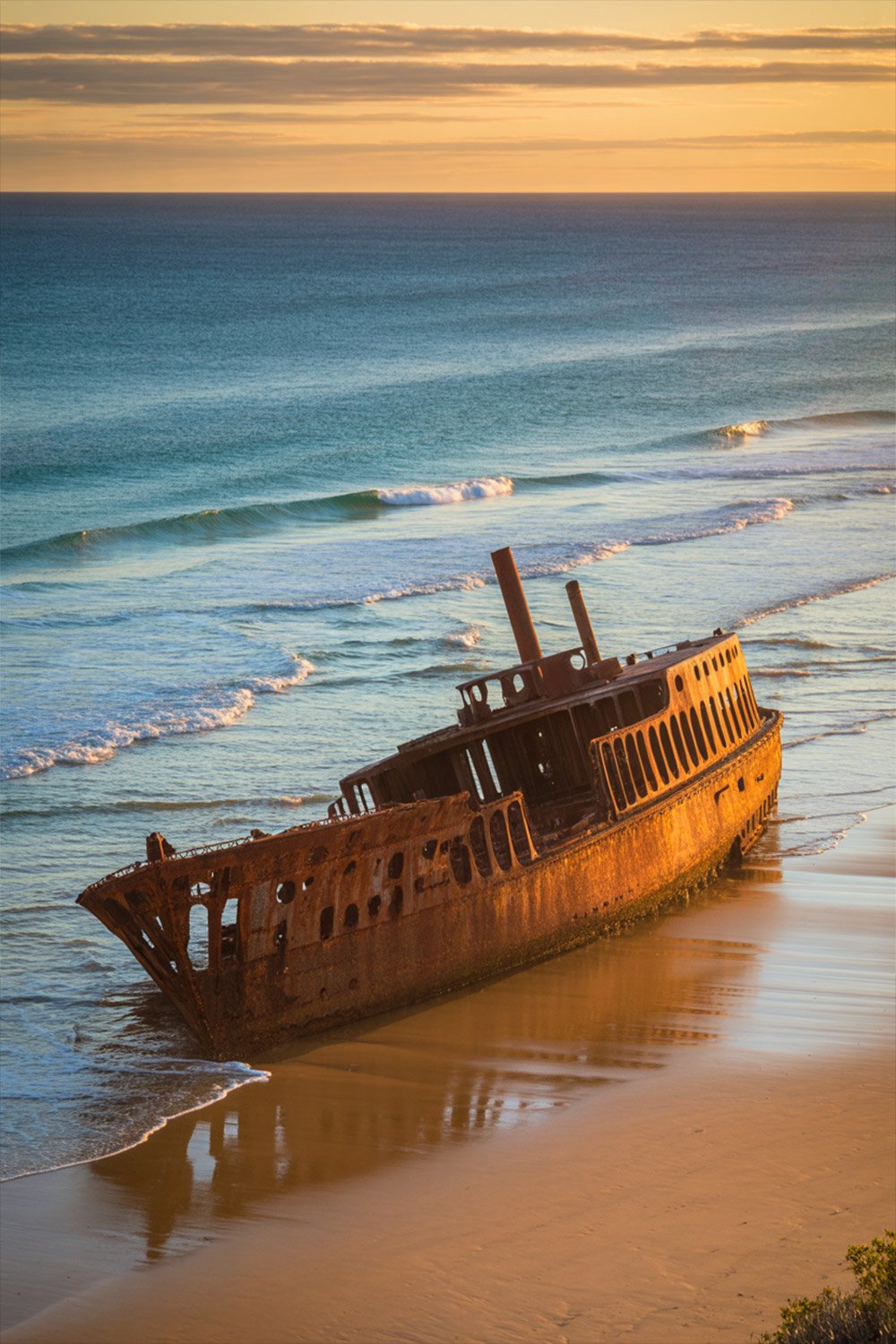
While viewing the wreck, visitors can learn about its history through informational placards that detail the vessel’s construction, service history, and the circumstances of its beaching. These interpretive signs include historical photographs showing the Maheno in its prime, offering a stark contrast to its current state.
The site is easily accessible from 75 Mile Beach, with a designated parking area nearby. Most visitors spend between 20-40 minutes exploring and photographing the wreck, making it an ideal stop during a day of beach driving. The wreck’s appearance changes subtly with the tides, weather conditions, and ongoing erosion, ensuring that no two visits are exactly alike.
Safety & Preservation
For both safety and conservation reasons, visitors must observe important restrictions at the Maheno site [SOURCE]. Climbing on or entering the wreck is strictly prohibited. The structure is unstable, with sharp rusted metal edges that pose serious injury risks. Additionally, walking or climbing on the wreck accelerates its deterioration and reduces its longevity as a historical site.
Safety guidelines for visitors include:
- Maintain a safe distance from the wreck at all times
- Be aware of tide conditions, as high tide can bring waves close to the wreck
- Watch for submerged metal pieces in the sand and water around the wreck
- Never remove any pieces of the wreck as souvenirs (this is illegal)
- Stay clear of the wreck during storms or high surf conditions
By respecting these guidelines, visitors help preserve this iconic landmark for future generations while ensuring their own safety. The gradual deterioration of the Maheno is part of its story and appeal, as each year the ocean claims a bit more of this once-grand vessel.
The Pinnacles Coloured Sands K’gari | Fraser Island Sand Cliffs
Natural Phenomenon
The Pinnacles Coloured Sands represent one of Fraser Island’s most striking geological features. These vibrant sand cliffs, located along 75 Mile Beach, display an extraordinary palette of over 70 different hues ranging from deep reds and oranges to yellows, browns, and whites [SOURCE].
This natural wonder formed over hundreds of thousands of years through a complex process of mineral leaching and oxidation. As rainwater percolated through the sand, it dissolved iron and other minerals, creating the distinctive layered appearance we see today. The rich iron content oxidized over time (essentially rusting), producing the predominant red and orange colors, while other minerals contributed additional hues.
According to Butchulla legend, the Pinnacles have a much more colorful origin story. Their tradition tells of a young woman named Wuru who rejected the advances of a rainbow spirit. When she fled along the beach, the spirit threw himself into the sand cliffs, coloring them with his rainbow essence. This cultural narrative adds another dimension to appreciating this natural formation.
Viewing and Photography
The Pinnacles are accessible via a short walking track from a designated parking area along 75 Mile Beach, about 6 kilometers north of the Maheno Shipwreck [SOURCE]. A viewing platform provides the perfect vantage point to appreciate and photograph the formation safely without damaging the fragile sand cliffs.
For the most vivid photographs, visit during mid-morning to early afternoon when direct sunlight illuminates the colors most dramatically. The contrast between the multicolored sands, blue sky, and white beach creates stunning photographic opportunities. On overcast days, the colors appear more subtle but still impressive.
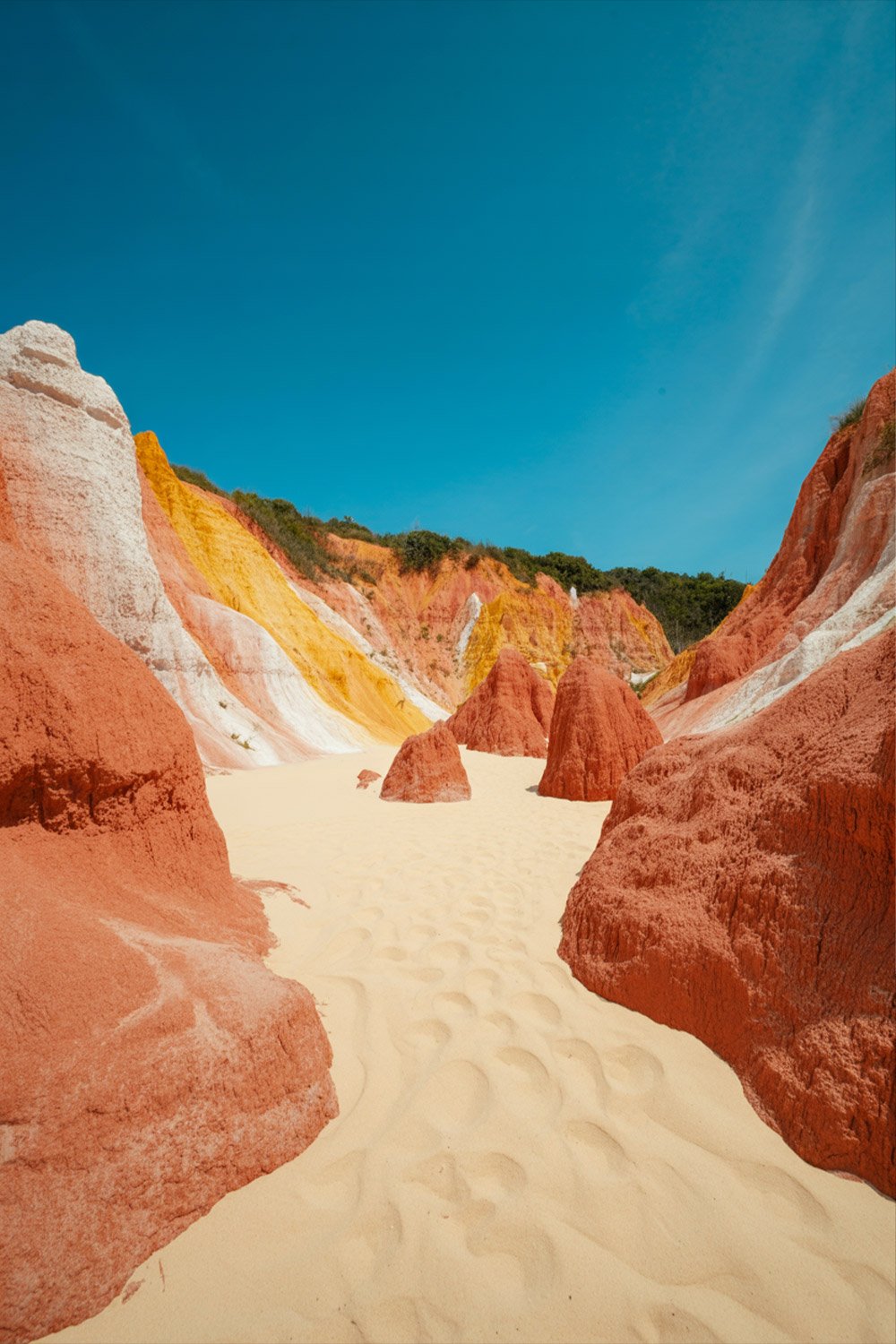
Photographers should consider:
- Using polarizing filters to reduce glare and enhance color saturation
- Capturing close-ups of the intricate layering patterns
- Including people in some shots to provide scale
- Shooting panoramas to capture the full expanse of the formation
- Visiting at different times of day to capture changing light conditions
The area surrounding the Pinnacles also offers wonderful photographic opportunities, with the beach, ocean, and often interesting driftwood creating natural framing elements.
Geological Significance
The Pinnacles offer a visible record of Fraser Island’s geological history, with each colored layer telling part of the story of the island’s formation [SOURCE]. Scientists study these formations to understand ancient climate patterns, as different colors can indicate varying environmental conditions during deposition.
The preservation of these sand formations is remarkable given their exposure to the elements. While wind and rain continually reshape the surface details, the overall structure has remained relatively stable due to the natural cementing effect of minerals within the sand.
Similar colored sand formations can be found elsewhere on Fraser Island, particularly at Red Canyon and along sections of the eastern beach, though the Pinnacles remain the most accessible and dramatically colored example. These formations collectively help geologists understand the island’s evolution as the world’s largest sand island.
For travelers who have experienced the Sydney area’s geological features, the Pinnacles offer a fascinating contrast in how natural processes create distinctive landscapes in different environments.
Practical Travel Planning Tips for visiting Fraser Island
Best Time to Visit Fraser Island
Fraser Island can be visited year-round, but the optimal time is typically between April and October during the Australian autumn, winter, and spring [SOURCE]. This period offers several advantages:
- Mild, pleasant temperatures ranging from 14-25°C (57-77°F)
- Lower rainfall and humidity compared to summer months
- Reduced presence of biting insects
- Less chance of dangerous stingers in the surrounding ocean waters
- More reliable driving conditions with fewer washouts on beach and inland tracks
The peak tourist season falls between June and August (Australian winter), when weather conditions are most reliable. For those who prefer fewer crowds, consider the “shoulder seasons” of April-May or September-October, when conditions are still favorable but visitor numbers are lower.
Summer (November-March) brings warmer temperatures and longer days but also higher humidity, occasional heavy rainfall, and an increased risk of vehicle bogging in soft sand. If visiting during summer, early morning activities are recommended to avoid the midday heat.
Permits & Tours
All visitors to Fraser Island require permits for both vehicle access and camping [SOURCE]. These permits help manage visitor impact and fund conservation efforts:
- Vehicle Access Permit: Required for all vehicles entering the island, regardless of length of stay. Must be displayed on your windshield.
- Camping Permit: Required if staying overnight in any of the island’s campgrounds. Must be obtained before arrival.
Permits can be purchased online through the Queensland Parks and Wildlife Service website, at visitor information centers in nearby towns like Hervey Bay, or through certain ferry operators and tour companies.
For first-time visitors or those without 4WD experience, guided tours offer significant advantages:
- Expert drivers familiar with the island’s challenging terrain
- Local knowledge about tides, safe crossing points, and wildlife
- Historical and ecological information enhancing the experience
- All permits and logistics handled by the tour operator
- Transport in purpose-built 4WD vehicles designed for comfort and safety
Tour options range from single-day excursions to multi-day adventures with accommodations included. Some tours focus on specific interests like fishing, photography, or ecological education.
Vehicle Rentals
For self-drive adventures, renting a suitable 4WD vehicle is essential [SOURCE]. Not all 4WDs are created equal when it comes to sand driving, so choose carefully:
- Select high-clearance 4WDs with low-range capability
- Larger vehicles like Toyota LandCruisers, Nissan Patrols, or similar models handle the conditions best
- Ensure the rental agreement specifically permits Fraser Island driving (many standard rental contracts prohibit it)
- Consider vehicles with snorkels for deeper water crossings
- Check that recovery gear is included (shovel, traction mats, tire pressure gauge)
Specialized Fraser Island rental operators in Hervey Bay and Rainbow Beach often provide:
- Vehicle orientation sessions and sand driving tips
- Maps and suggested itineraries
- Tide charts and safety information
- Emergency contact details and recovery services
- Optional camping equipment packages
If driving yourself, always travel with at least one other vehicle when possible, maintain appropriate tire pressures for sand driving (typically 18-20 PSI), and practice recovery techniques before departure.
Where to Stay in Fraser Island
Fraser Island offers accommodation options ranging from basic camping to luxury resorts, catering to all preferences and budgets [SOURCE]:
- Camping: Over 45 designated camping areas across the island, including:
- Beach camping zones along the eastern and western shorelines
- Fenced campgrounds with dingo deterrent fencing (recommended for families)
- Remote walk-in only sites for wilderness experiences
- Resorts:
- Kingfisher Bay Resort – Eco-friendly resort on the western side with restaurants, pools, and guided activities
- K’gari Beach Resort (formerly Eurong Beach Resort) – Located on 75 Mile Beach with direct beach access
- Other Options:
- Holiday houses at Happy Valley and Orchid Beach
- Wilderness lodges with guided experiences
- Permanent safari tents with beds and basic facilities
Accommodation books quickly during peak periods (school holidays and long weekends), so reservations several months in advance are recommended, particularly for the resorts. Many travelers on the Great Ocean Road journey continue north to experience Fraser Island’s unique accommodations.
Sample Itineraries to experience Fraser Island
A three-day itinerary offers enough time to experience Fraser Island’s highlights while maintaining a comfortable pace [SOURCE]:
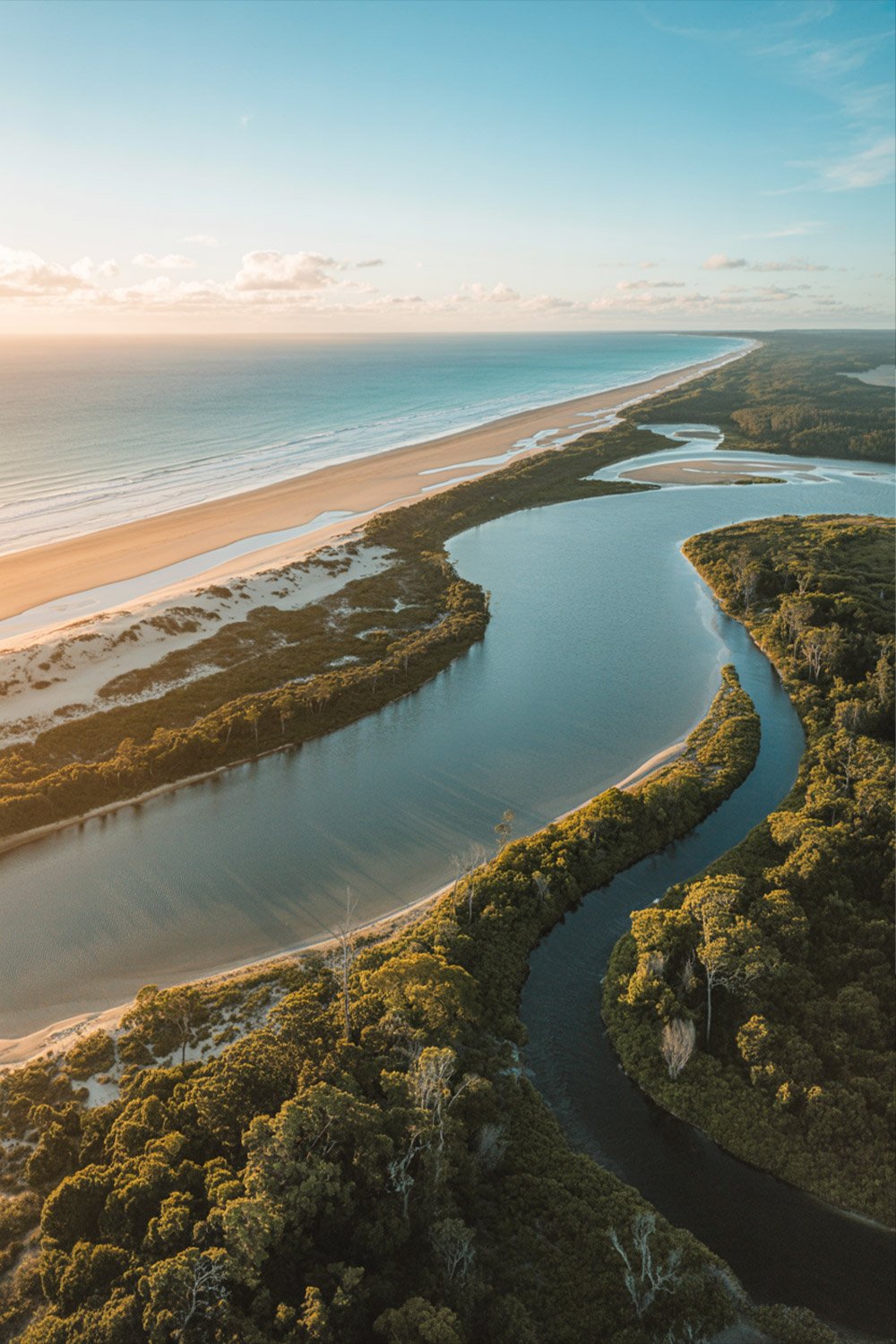
Day 1: Central Island Exploration
- Morning: Ferry crossing and setup at accommodation
- Midday: Visit Central Station and walk along Wanggoolba Creek
- Afternoon: Swim at Lake McKenzie
- Evening: Sunset at Kingfisher Bay (west coast) or stargazing
Day 2: Eastern Beach Adventure
- Morning: Drive along 75 Mile Beach (tide dependent)
- Midday: Explore Eli Creek and the Maheno Shipwreck
- Afternoon: Visit The Pinnacles Coloured Sands
- Evening: Beach fishing (permit required)
Day 3: Northern Highlights
- Morning: Drive to Champagne Pools for safe ocean swimming
- Midday: Hike to Indian Head for panoramic views and potential marine wildlife spotting
- Afternoon: Visit Lake Wabby before returning to accommodation
- Evening: Prepare for departure the following day
For those with more time, consider adding:
- Exploring additional lakes like Lake Birrabeen or Lake Allom
- Hiking the challenging Valley of the Giants to see ancient satinay trees
- A full day at Wathumba Creek on the remote northwest coast
- Dedicated wildlife viewing opportunities at dawn and dusk
Frequently Asked Questions about Fraser Island
What is the best season to visit K’gari (Fraser Island) for weather and fewer crowds?
The best season to visit K’gari is Australian spring (September to December), when the weather is mild, storms are less frequent, and beach driving is more reliable. Whale watching is also excellent between July and October. If you’re looking to avoid both crowds and peak weather—and save on costs—consider visiting in the cooler months of May through August.
Do I need a 4WD permit to explore Fraser Island and its inland tracks?
Yes, exploring Fraser Island’s beaches and inland tracks requires a high-clearance 4WD with low-range capability, whether rented or self-driven, and permits are compulsory for both vehicles and camping through the Queensland Parks and Wildlife Service.
Is it better to take a guided Fraser Island tour or self-drive a 4WD?
Guided multi-day or tag-along Fraser Island tours are recommended for visitors unfamiliar with sand driving, tides, and beach routes. Self-drive is an option if you’re confident in off-road skills, have recovery gear, and ensure your insurance covers beach driving.
How many days do I need to explore Fraser Island’s main attractions?
Two to three days is the recommended duration to cover Fraser Island’s highlights such as Lake McKenzie, 75 Mile Beach, the Maheno Shipwreck, and the Pinnacles Coloured Sands. Guided tours often follow a 3-day itinerary, which balances sightseeing and travel pace.
What should I pack for a Fraser Island camping or self-drive trip?
For a Fraser Island camping or self-drive trip, pack swimwear, a towel, walking shoes, sun protection, insect repellent, a warm jacket for evenings, toiletries, a driver’s licence, and a reusable water bottle. If camping, bring compact sleeping gear and keep luggage minimal since space in 4WDs is limited.

